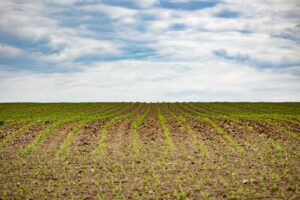Introduction:
Unlocking the secrets of soil carbon for agriculture is of paramount importance in the quest for sustainable and productive farming practices. Soil carbon, a fundamental component of soil organic matter, plays a crucial role in soil health, fertility, and overall agricultural productivity. Here, we delve into key aspects of understanding and enhancing soil carbon in the context of agriculture:
Soil Carbon and Agricultural Productivity:
Soil carbon is a key determinant of soil structure, water retention, and nutrient availability—all critical factors influencing crop growth and yield. High levels of soil carbon contribute to improved soil fertility, microbial activity, and the overall health of the soil. As agriculture faces the challenges of feeding a growing global population while mitigating environmental impact, optimizing soil carbon becomes a linchpin for sustainable and resilient farming systems.
Carbon Sequestration Practices:
Agricultural activities have historically contributed to the release of carbon dioxide into the atmosphere through practices such as tillage, deforestation, and the use of synthetic fertilizers. However, adopting carbon sequestration practices can reverse this trend. Cover cropping, for example, involves planting crops during non-growing seasons to protect and enrich the soil, sequestering carbon in the process. Additionally, agroforestry—integrating trees into agricultural landscapes—provides both carbon sequestration benefits and additional ecosystem services.
Organic Carbon Inputs:
Enhancing organic carbon inputs to the soil is a key strategy for increasing soil carbon levels in agriculture. Organic amendments, such as compost, manure, and crop residues, not only introduce organic matter to the soil but also promote microbial activity. Microorganisms play a crucial role in decomposing organic material and converting it into stable forms of soil carbon. Integrating organic materials into farming practices represents a sustainable approach to building and maintaining soil carbon.
Reduced Tillage Practices:
Tillage can accelerate the decomposition of organic matter and release stored carbon into the atmosphere. Adopting reduced tillage or no-till practices helps minimize soil disturbance, preserving soil structure and organic carbon. This approach not only contributes to carbon sequestration but also offers benefits such as improved water retention, reduced erosion, and energy savings.
Crop Rotation and Diversification:
Crop rotation and diversification are effective strategies for maintaining and enhancing soil carbon. Different crops have varying root structures and exudate profiles, influencing the types and amounts of organic matter returned to the soil. Diversifying crops can promote a more balanced and resilient soil carbon pool. Additionally, certain crops, such as legumes, form symbiotic relationships with nitrogen-fixing bacteria, contributing to soil fertility and carbon storage.
Monitoring and Assessment:
Regular monitoring and assessment of soil carbon levels are crucial for informed decision-making in agriculture. Soil sampling and analysis provide valuable insights into current carbon levels and trends over time. Advances in technology, including remote sensing and precision agriculture tools, offer efficient means of assessing large-scale soil carbon dynamics. This information empowers farmers to tailor management practices to optimize soil carbon for improved productivity and sustainability.
Climate-Smart Agriculture:
Climate-smart agriculture involves practices that enhance productivity, resilience, and mitigation of climate change impacts. Practices aimed at increasing soil carbon align with climate-smart agriculture goals. By implementing strategies that sequester carbon in the soil, farmers contribute to climate change mitigation while improving their adaptive capacity to changing environmental conditions.
Farmer Education and Outreach:
Educating farmers about the importance of soil carbon and providing resources for adopting carbon-friendly practices are essential components of sustainable agriculture. Extension services, workshops, and outreach programs can play a pivotal role in disseminating knowledge about soil carbon management and its benefits. Farmers equipped with this knowledge are more likely to embrace practices that enhance soil carbon and contribute to long-term agricultural sustainability.
Policy Support:
Government policies and incentives can significantly influence the adoption of soil carbon-friendly practices in agriculture. Establishing policies that reward farmers for implementing carbon sequestration measures, such as through carbon credits, can provide economic motivation. Additionally, supportive policies for research, education, and infrastructure can create an enabling environment for sustainable agricultural practices.
Research and Innovation:
Ongoing research and innovation are critical for unlocking new insights into soil carbon dynamics and developing novel approaches for carbon sequestration in agriculture. Collaboration between researchers, farmers, and agricultural stakeholders can lead to the discovery of innovative practices and technologies that enhance soil carbon while maintaining or improving crop yields.
Conclusion:
In conclusion, unlocking the secrets of soil carbon for agriculture is not only a scientific endeavour but also a practical and strategic approach to building resilient and sustainable farming systems. By implementing practices that enhance soil carbon, farmers can improve soil health, increase productivity, and contribute to global efforts to address climate change and ensure food security. The journey towards sustainable agriculture involves recognizing the intricate relationship between soil carbon and agricultural systems and implementing informed practices that benefit both the farmer and the environment.

